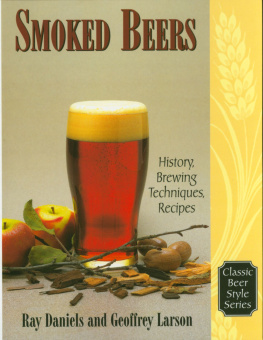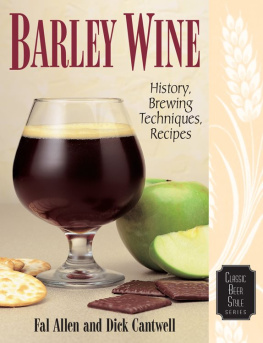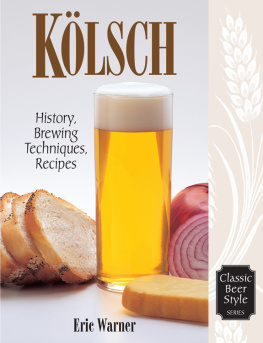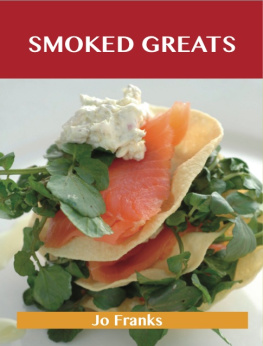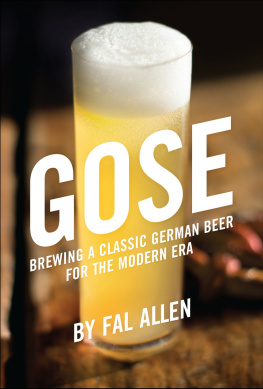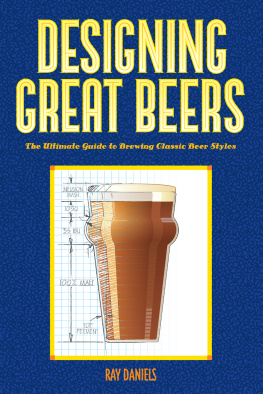Daniels Ray - Smoked beers: history, brewing techniques, recipes
Here you can read online Daniels Ray - Smoked beers: history, brewing techniques, recipes full text of the book (entire story) in english for free. Download pdf and epub, get meaning, cover and reviews about this ebook. City: Boulder;Colo, year: 2000, publisher: Brewers Publications, genre: Home and family. Description of the work, (preface) as well as reviews are available. Best literature library LitArk.com created for fans of good reading and offers a wide selection of genres:
Romance novel
Science fiction
Adventure
Detective
Science
History
Home and family
Prose
Art
Politics
Computer
Non-fiction
Religion
Business
Children
Humor
Choose a favorite category and find really read worthwhile books. Enjoy immersion in the world of imagination, feel the emotions of the characters or learn something new for yourself, make an fascinating discovery.
- Book:Smoked beers: history, brewing techniques, recipes
- Author:
- Publisher:Brewers Publications
- Genre:
- Year:2000
- City:Boulder;Colo
- Rating:4 / 5
- Favourites:Add to favourites
- Your mark:
- 80
- 1
- 2
- 3
- 4
- 5
Smoked beers: history, brewing techniques, recipes: summary, description and annotation
We offer to read an annotation, description, summary or preface (depends on what the author of the book "Smoked beers: history, brewing techniques, recipes" wrote himself). If you haven't found the necessary information about the book — write in the comments, we will try to find it.
Smoked beers: history, brewing techniques, recipes — read online for free the complete book (whole text) full work
Below is the text of the book, divided by pages. System saving the place of the last page read, allows you to conveniently read the book "Smoked beers: history, brewing techniques, recipes" online for free, without having to search again every time where you left off. Put a bookmark, and you can go to the page where you finished reading at any time.
Font size:
Interval:
Bookmark:
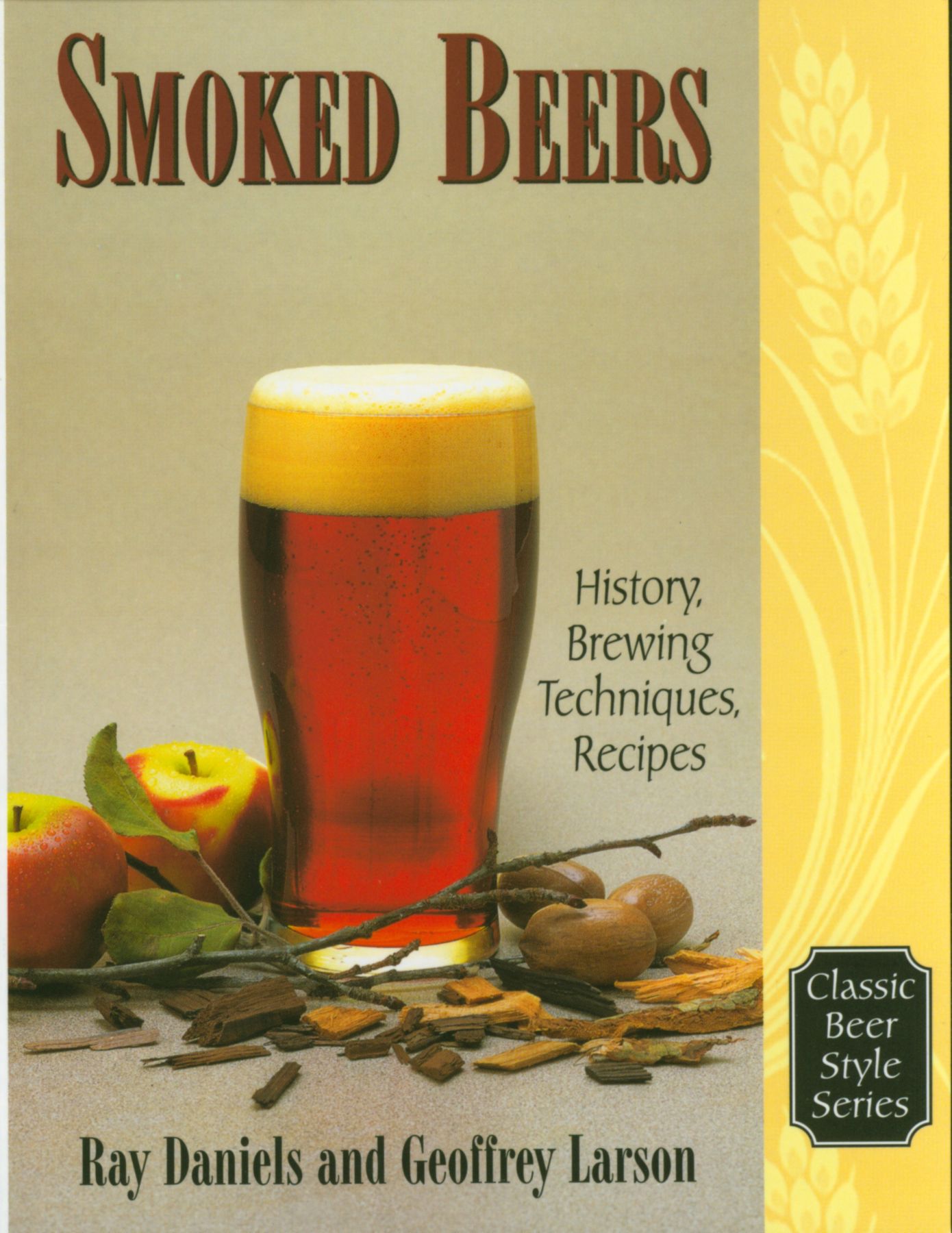

Ray Daniels and Geoffrey Larson

Brewers Publications
a division of the Brewers Association
Boulder, Colorado
Brewers Publications
A division of the Brewers Association
P.O. Box 1679, Boulder, CO 803061679
303-447-0816; Fax 303-447-2825
www.BrewersPublications.com
2000 by Ray Daniels
2000 by Geoffrey Larson
All rights reserved under International and Pan-American Copyright Conventions. No portion of this book may be reproduced in any form without written permission of the publisher. The authors, editor, and publisher assume no responsibility for the use or misuse of information contained herein.
ISBN-13: 978-0-937381-76-2
ISBN-10: 0-937381-76-4
ISBN-13: 978-1-938469-58-9 (e-book)
Library of Congress Cataloging-in-Publications Data
Daniels, Ray.
Smoked Beers : history, brewing techniques, recipes / Ray Daniels
and Geoffrey Larson
p. cm.(Classic beer style series ; no. 18)
ISBN 0-937381-76-4 (alk. paper)
1. Beer. 2. Smoked Foods. I. Larson Geoffrey. II. Title. III. Classic beer style Series ; 18.
TP577 .D27 2000
633.42dc21
00064154
This book is dedicated to Sabine Weyermann and Thomas Kraus-Weyermann who help to keep the fire burning for smoked beers worldwide.

The Classic Beer Style Series is devoted to offering in-depth information on world-class styles by exploring their history, flavor profiles, brewing methods, recipes, and ingredients.
O THER B OOKS IN THE C LASSIC B EER S TYLE S ERIES
Klsch
Altbier
Barley Wine
Stout
Bock
Scotch Ale
German Wheat Beer
Belgian Ale
Porter
Oktoberfest, Vienna, Mrzen
Continental Pilsener
Brown Ale
Mild Ale
Pale Ale
Bavarian Helles
Appendixes
No worthwhile book on the subject of brewing can be completed without input from many sources. As a result, our work on this volume brought us into contact with many individuals who imparted their wisdom and helped to point us in the right direction.
The first person we must mention is Geoffs wife, Marcy Larson. She is truly the third author of this book, having provided immeasurable help from beginning to end. She was present for much of the field research in Europe, helping with logistics and contributing to our thoughts through her own observations and our many discussions over smoked beers. For Geoff, she has helped directly in compiling data, serving as a sounding board and suggesting enhancements to drafts of the text. Without her contributions, this book would lack many of its essential elements.
Our second mention must go to Sabine Weyermann and her husband Thomas Kraus-Weyermann. This couple represents the third-generation of distinguished Bamberg maltsters. As makers of beechwood-smoked malt, they help to preserve the tradition of rauchbier amongst Bamberg-area brewers while spreading the gospel of smoke-flavored beers to brewers around the world. Through their hospitality and their many generous introductions, we managed to garner a detailed understanding of the malting and brewing processes that produce the classic Bamberg rauchbier. During our visits, they shared their home, their knowledge and their library so that we could get the information needed to make this book a reality.
Other maltsters who contributed to this book is Bob McWilliam and Lorne Watson of Bairds Malt Limited in Arbroath, Scotland. They provided Geoff with a day-long tour of the peated malt production and laboratory facility. Their experience with peated malt gave us insights that would not otherwise have been possible.
Of course many brewers shared their wisdom with us, often as part of an in-depth tour of their facilities. Herr Martin Knob, head brewer at Schlenkerla, generously shared his time with us on more than one occasion as he led us through the fascinating brewery that produces this classic beer. At Spezial, owner and brewmaster Christian Merz indulged us in a detailed discussion of his operation and its history. Georg & Margareta Wrner from Bambergs Kaiserdom brewery hosted us at their beautiful restaurants while filling us in on the details of their export rauchbier and also the domestically distributed black beer that contains smoked malt. At the smaller breweries where we showed up unannounced, the owners were only too happy to show off their facilities and chat with Americans interested in smoked beer. We found a warm reception at Brauerei Kraus, Brauerei Barnikel and especially Brauerei Fischer. At Drei Kronen Gasthof, owner Hans-Ludwig Straub not only talked with us at length, but welcomed Geoff back the next day to participate in the brewing. The Gewalt family was kind enough to show Ray their makings in Erlangen as well as their American-style Hausbrauerei Steinbach-Bru.
One of the most interesting events of Rays time in Bamberg was making a connection that led him to a treasure trove of historical brewing books at Weihenstephan. There Martin Zarnkow hosted him for a day of research in German brewing texts that dated back to 1585 and also treated him to a taste of a wonderful smoked doppelbock.
During Geoffs research, he was assisted by the library staff of the University of California, Davis, during a three day beer research foray. Axel Borg and the rest of the reference staff that helped him navigate the recently acquired Hurty Peck collection. Their comments, help and passion for beverage literature guided Geoff into a better understanding of the past.
We want to thank all the breweries that responded to our requests for information about their beers with smoke flavor. We apologize that we could not profile every beer with equal emphasis as each and every one of you are pioneers in this modern rarity which at one time was the everyday expectation. The intended thrust of the book was more of an overview than a guide to all of the existing beers made with smoke. For any omissions, we apologize as they certainly were not intended.
Geoff owes a debt of gratitude to everyone at Alaskan Brewing Company who allowed him to put time into this book by shouldering additional work burdens that fell to them as a result. Ray owes great thanks to his family for the time spent on this project and also to Stephanie Johnson and Amahl Turczyn at the Association of Brewers for keeping Zymurgy and The New Brewer on track while he checked out for several weeks to work on this ancillary project.
We owe a special debt of thanks to Greg Noonan. The first smoked beer that Ray ever remembers drinking was one of Gregs lightly peated Wee Heavys served up during the 1991 American Homebrewers Conference in Manchester, NH. Were it not for that tasty introduction, Ray might never have developed his interest in this subject. Greg also took Geoff through New England during his research travels and talked with him about his experiences making smoked beers. Finally, he served as the technical editor for this texta fact that allowed both of us to sleep more soundly as this project headed toward its final days.
Next pageFont size:
Interval:
Bookmark:
Similar books «Smoked beers: history, brewing techniques, recipes»
Look at similar books to Smoked beers: history, brewing techniques, recipes. We have selected literature similar in name and meaning in the hope of providing readers with more options to find new, interesting, not yet read works.
Discussion, reviews of the book Smoked beers: history, brewing techniques, recipes and just readers' own opinions. Leave your comments, write what you think about the work, its meaning or the main characters. Specify what exactly you liked and what you didn't like, and why you think so.

